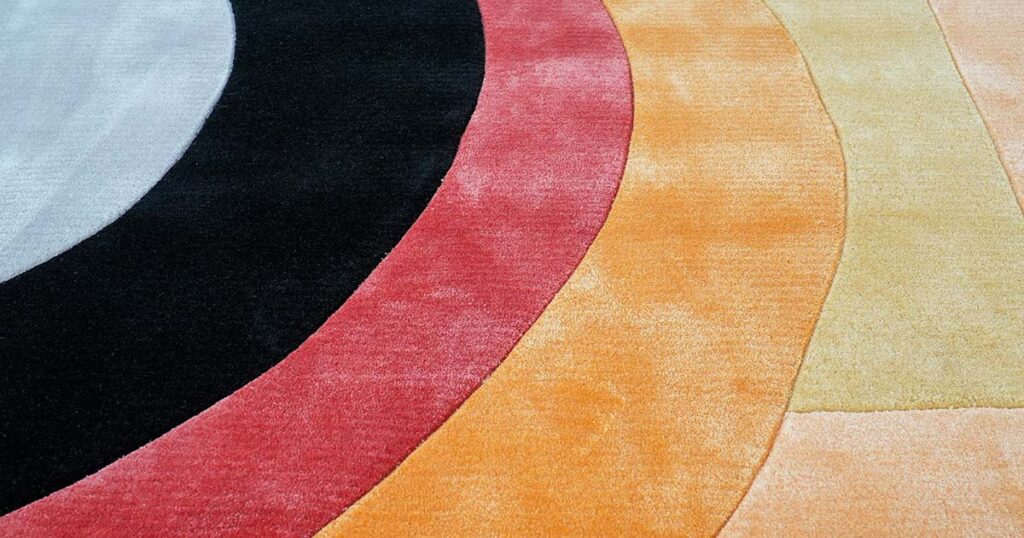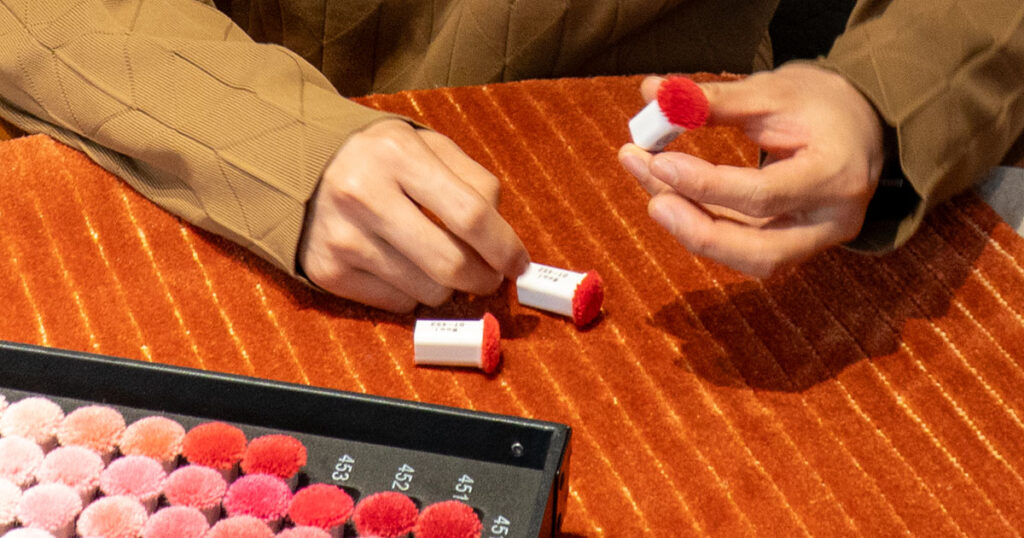The right area rug can transform your living space.
In fact, this guide explores popular rug styles to help with your search.
By understanding different styles, you can make better choices for your home.
Traditional Rugs: Timeless Elegance
Traditional rugs come from Persian and Oriental design heritage. Specifically, they feature intricate patterns and detailed borders. Rich colors like deep reds, blues, and golds are common. Additionally, these rugs often show medallions and floral motifs in symmetrical designs.
Traditional rugs work well in formal living rooms and dining areas. Moreover, they add sophistication to any space. They pair nicely with classic furniture pieces. Despite being centuries old, these designs have lasting appeal. People still love them for their warmth and sense of heritage.
Modern and Contemporary Rugs: Clean Lines and Bold Statements
Modern rugs embrace simple, clean lines. Notably, they often feature geometric shapes and abstract patterns. These rugs focus on visual impact rather than intricate details. As a result, bold color contrasts or single-color schemes make strong statements.
Contemporary rugs reflect current design trends. For instance, they may include asymmetrical patterns and unusual color pairings. These rugs work well with sleek furniture and open floor plans. Consequently, they’re popular in urban homes and artistic spaces. They anchor a room while adding visual interest.
Transitional Rugs: The Best of Both Worlds
Transitional rugs blend traditional and modern styles. Specifically, they might use classical patterns with simpler designs. Updated color palettes and contemporary textures are common features. Usually, these rugs use neutral tones with subtle patterns.
Many people choose transitional rugs for their versatility. In essence, they fit almost any décor style. They feel timeless yet current. These rugs work in living rooms and spaces with mixed furniture styles. Therefore, they appeal to those who like classic design without heavy ornamentation.
Bohemian (Boho) Rugs: Free-Spirited and Eclectic
Bohemian rugs celebrate color and global influences. Primarily, they draw from Moroccan and tribal designs. Vibrant colors and unique details like tassels are standard features. In addition, many boho rugs show diamond patterns or tribal motifs.
These rugs have a relaxed, collected feel. Hence, they work well in creative spaces and eclectic rooms. They match beautifully with plants and natural materials. Above all, people love them for their warmth and adventurous spirit. They instantly add character to any room.
Natural Fiber Rugs: Texture and Sustainability
Natural fiber rugs use jute, sisal, seagrass, or wool. As a result, they bring organic texture into your home. Earth tones dominate these rugs. Furthermore, simple weaves highlight the natural beauty of the materials.
These rugs fit perfectly in coastal and farmhouse styles. Also, they work well in high-traffic areas like living rooms. More people now seek sustainable home options. Thus, natural fiber rugs offer eco-friendly qualities. They add subtle texture to any space.
Geometric Rugs: Structure and Visual Interest
Geometric rugs show repeating shapes in striking patterns. Specifically, diamonds, hexagons, and squares create visual rhythm. Modern versions use bold colors and large-scale patterns. Interestingly, both traditional and contemporary styles use geometric elements.
These structured rugs add energy to minimal spaces. Particularly, they work well in mid-century and contemporary homes. Their popularity grows because they hide marks well. Furthermore, they offer visual interest without competing with furniture. They bring movement and life to simple rooms.
Distressed and Vintage-Look Rugs: Character with Convenience
Distressed rugs are new rugs that look aged. In detail, they show faded colors and subtle wear marks. They mimic antique pieces through special finishing techniques. Often, they use traditional patterns with a weathered appearance.
People love these rugs for their instant character. Essentially, they offer antique charm without fragility or high costs. They fit well in farmhouse and industrial spaces. Additionally, they forgive busy household traffic. New wear simply adds to their intended look. They bring instant history to modern homes.
Solid Color Rugs: Versatile Foundations
Solid color rugs come in every shade imaginable. From plush high-pile to flat-woven styles, they vary widely. They provide a clean foundation for other design elements. Because of their simple nature, they remain highly versatile.
These rugs work in rooms where other elements need to shine. In particular, they pair well with patterned furniture or bold wallpaper. Contemporary spaces often feature solid rugs. After all, they’re perfect where texture matters more than pattern. Their appeal comes from easy style updates as trends change.
Shag and High-Pile Rugs: Comfort and Luxury
Shag rugs feature deep, plush piles. Consequently, they create a soft feel underfoot. Modern versions use various materials and heights. While classic shags come in white or cream, newer options include bold colors and pattern work.
These rugs add coziness to bedrooms and sitting areas. Not surprisingly, they work best where comfort matters most. They remain popular for their physical warmth. Indeed, the soft texture appeals to many homeowners. They add luxury to any living space.
Indoor-Outdoor Rugs: Practical Style
Indoor-outdoor rugs withstand tough conditions. Importantly, they resist moisture, fading, and mildew. Synthetic materials make them highly durable. Yet, they come in many styles from geometric to traditional.
These rugs work on patios and in high-traffic indoor areas. In fact, kitchens and entryways benefit from their durability. Better manufacturing now creates attractive, practical designs. As a result, people appreciate their easy care and toughness. They bring style to challenging environments.
Commercial Interior Settings: Stylish Functionality
Commercial spaces need rugs that balance looks with durability. Generally, large-scale geometric patterns dominate office settings. These patterns hide soil in high-traffic areas. Meanwhile, dark or multi-colored bases extend time between cleanings. They make strong first impressions in lobbies.
Hotels and restaurants prefer transitional designs. Naturally, these patterns won’t quickly look dated. Mid-tone colors hide stains effectively. Wool blends work well in upscale settings. Therefore, they resist stains naturally. They also help reduce noise levels.
Retail spaces often use custom rugs that reflect brand colors. Obviously, synthetic fibers withstand constant foot traffic. Low pile heights stay clean more easily. While bright patterns create memorable shopping experiences, they also help define different areas within stores.
Healthcare facilities choose solid or subtle textures. Typically, calming colors like blues and greens dominate these spaces. Antimicrobial properties matter in medical settings. Instead of large rugs, many places use carpet tiles. Thus, damaged sections can be replaced easily.
Sustainable options gain popularity in commercial spaces. Of course, low VOC emissions protect indoor air quality. Recycled content meets green building standards. Natural fiber blends with synthetic reinforcement work well. In the end, they combine eco-friendly qualities with needed durability.
Choosing the Right Rug Style for Your Space
Consider your existing décor when selecting a rug style. And think about how the room functions daily. Your personal taste should guide your final choice. Traditional rugs suit classic interiors. While modern styles match contemporary spaces, transitional rugs work with mixed décor.
Practical matters deserve attention too. For example, high-traffic areas need durable fibers. Distressed patterns hide wear better than solid colors. In contrast, bedrooms can use more delicate materials. Remember to think about how your furniture will sit on the rug.
Size matters greatly in rug selection. Certainly, a small rug can make a room feel disjointed. An oversized rug might overwhelm the space. Ideally, living room rugs should fit under front furniture legs. Similarly, dining room rugs should extend beyond the table edge. Bedroom rugs look best extending beyond the bed sides.
Finding Your Perfect Rug
Popular styles offer good starting points. However, the perfect rug meets your needs and matches your style. Take time with this important decision. After all, a quality rug will last for many years. It will affect how your room looks and feels.
Visit showrooms to see options in person. Also, bring color samples from your existing décor. Order samples when buying online. Then check potential rugs in different lighting. Remember that colors can change dramatically between natural and artificial light.
Ready to find your perfect area rug? Contact us today. We offer high-quality rugs in all popular styles. Our team will help you find the ideal match for your home or business.




